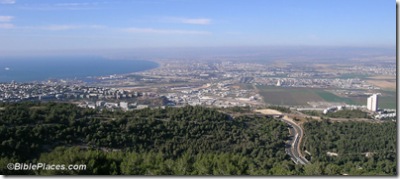Haaretz has an interesting article today about a site I’ve never heard of, with connection to a biblical story about which I know of no other archaeological evidence.
A wooden sign stands at the entrance to the dirt road leading to the Segev Forest in the Western Galilee, inscribed with the symbol of the Israel Antiquities Authority (IAA). Beneath it in fading gr een letters is the name “Rosh Zayit Ruin.” Without perusing the entrance to the dirt road carefully, you might not see the weed-covered sign, and not realize that this is the entrance to a very special archaeological site….
“The excavations Dr. Zvi Gal carried out at the beginning of the 1990s solved a very complex puzzle about King Solomon and Hiram, king of Phoenicia,” says Mordechai Aviam, director of the Galilee Archaeological Institute.
“A site of a Phoenician nature was built here, a kind of administrative and military center constructed on top of private dwellings from the 11th century. The Phoenician nature of the site bears out the story of King Solomon giving King Hiram portions of the country in exchange for the cedars of Lebanon, with which he built the Temple,” Aviam says, smiling in consideration of the implications the story has for the present-day debate over dividing the land.
The relevant Scripture reference is 1 Kings 9:11-13. You can read the rest of the brief article here.
